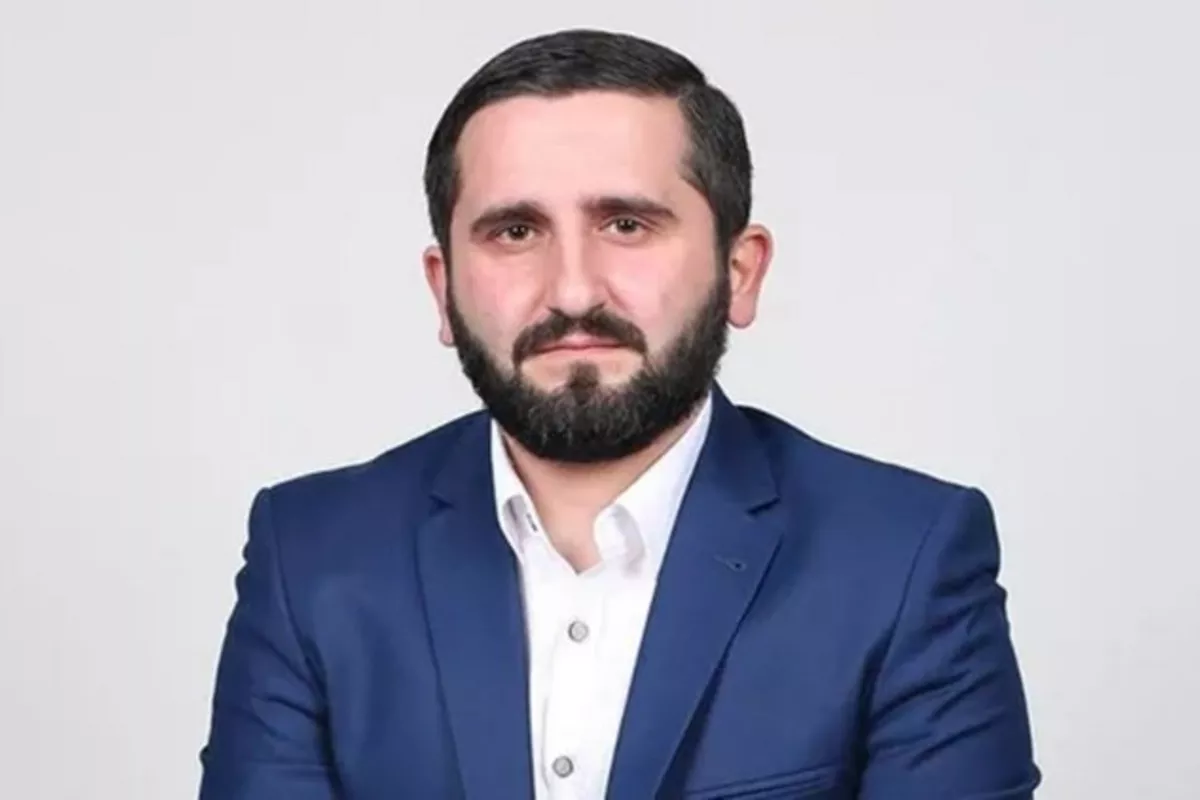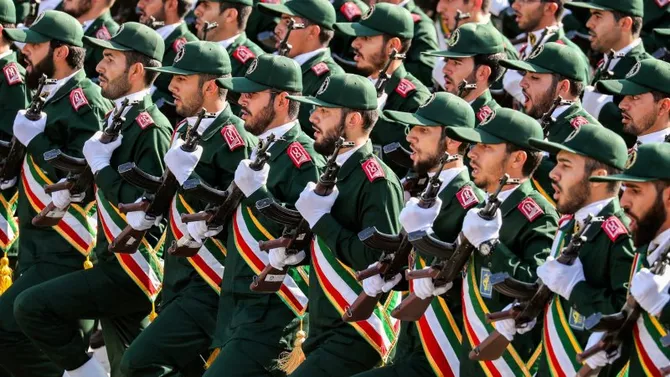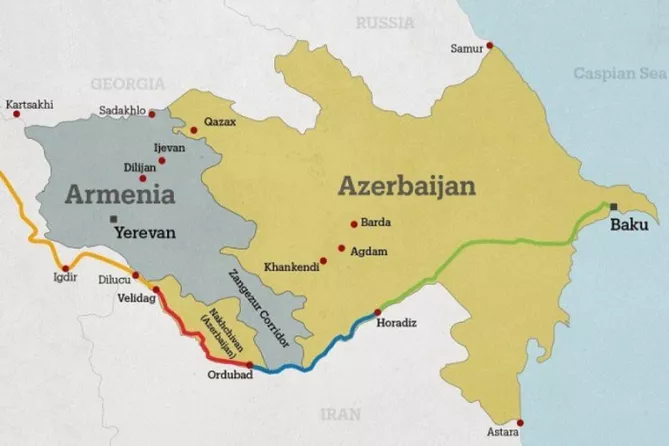
Georgian political analyst and Middle East expert Vasil Papava, in an interview with The Caspian Post, has highlighted that the proposed Zangezur Corridor could provoke retaliatory actions from both Iran and Russia.
- Recently, there was an armed attack on a courthouse in the Iranian city of Zahedan. How do you comment on this incident? What is it related to?
- The armed attack by militants on the courthouse in Zahedan on July 26 led to the death of at least six people, including both civilians, security personnel, and the attackers themselves. More than 20 people were injured. Responsibility for the attack was claimed by the Sunni armed group Jaysh al-Adl, which stated that the attack was revenge against judicial and security authorities for issuing death sentences and repressing the Baluchi minority.
This is not the first such incident: Jaysh al-Adl and other militant groups have repeatedly carried out attacks in Sistan and Baluchestan Province, exploiting local discontent to escalate violence against state institutions. Iranian authorities are actively combating such groups, including Jaysh al-Adl and the previously active Jundallah.
As is known, Jundallah was dismantled by Iranian intelligence after the capture and execution of its leader, Abdolmalek Rigi, in 2010. From 2003 to 2010, the group was responsible for the killing of more than 150 security personnel and other individuals, after which, due to Iranian operations, it effectively ceased to exist.

Jaish al-Adl militants (Source: The Baghdad Post)
The current group Jaysh al-Adl, created by former Jundallah members, is also being severely targeted. In January 2025, Iranian military forces carried out missile and air strikes on Jaysh al-Adl bases located in Pakistan. Additionally, Iran’s security forces are conducting active anti-terror operations within Sistan and Baluchestan Province, including eliminating militants, seizing bases, and halting criminal activities.
Iranian officials accuse Jaysh al-Adl of cooperating with foreign intelligence services and receiving funding from abroad, linking these groups to efforts aimed at destabilizing the region. Measures taken also include combating smuggling, cutting off arms and financial supply routes for terrorists. In short, Tehran’s policy towards such groups is comprehensive, combining special operations with military and intelligence tools, including cross-border strikes on their bases.
- How would you generally describe Iran’s domestic political situation following the end of the 12-day war?
- The domestic political situation in Iran after the end of the 12-day war with Israel is marked by a combination of outward national unity and underlying signs of internal turbulence.
On the one hand, mass Israeli strikes and casualties triggered public mobilization around national symbols and the country's military-political leadership. Official propaganda emphasizes the country’s “resilience” and builds a narrative of victory and perseverance in the face of seemingly insurmountable threats. Authorities draw parallels to the Iran-Iraq war of 1980-1988 and promote rhetoric of national unity.
However, the true consequences of the war are emerging through tough questions directed at the government: Why did the defense system and allied proxy groups fail to protect the country? What is the cost of material and personnel losses, especially within the Islamic Revolutionary Guard Corps (IRGC)?

Source: AFP
The loss of key commanders and scientists has heavily impacted not only military leadership but also the general sense of security.
The economic situation has worsened due to infrastructure damage and intensified sanctions pressure, further lowering the living standards of the population. There is also clear dissatisfaction with the lack of support from Iran’s major external and regional allies.
A divide is emerging within the elite - some leaders cautiously hint at the need for negotiations, while others take a hardline stance. This is creating internal political polarization between conservatives and pragmatists.
It can be said that post-war Iran is experiencing both societal and elite-level consolidation and a hidden crisis. The stability of the Islamic Republic’s political system will depend on whether its leadership can not only reinforce national security but also modernize governance to alleviate economic pressure and overcome international isolation.
- On July 16, Axios reported that U.S. Secretary of State Marco Rubio and the foreign ministers of France, Germany, and the UK agreed during a phone call to set an end-of-August deadline for Iran to reach a nuclear deal. How prepared is Iran for this step?
- Iranian authorities have repeatedly stated they are ready to negotiate and sign a nuclear deal, but they also set conditions, the main one being the preservation of the country's “legitimate nuclear rights” without restrictions on development. Tehran emphasizes that it does not seek to create nuclear weapons, a claim supported by official rhetoric and a fatwa issued by the Supreme Leader. At the same time, Iran maintains a cautious and firm position, particularly in response to ongoing Western pressure.
Some political forces in Iran are opposed to negotiations until specific preconditions are met, including the cessation of external pressure.
The recent rounds of negotiations have been described as serious and substantive, involving discussions on lifting sanctions and nuclear oversight, including the possible resumption of IAEA inspections. However, key disagreements remain, and the pressure is creating additional tension.
The outcome of talks on Iran’s nuclear program will depend on the willingness of both sides to compromise and the broader foreign policy context in the coming weeks. Domestic political dynamics in Iran and the stance of new administrations in the U.S. and EU will play crucial roles.
- According to European media, the U.S. has proposed transferring the Zangazur corridor, which would connect Azerbaijan with Nakhchivan, under the control of a private company, calling it the “Trump Bridge.” Iranian Supreme Leader's adviser Ali Akbar Velayati said this project is intended to create a land blockade around Iran, Russia, and the “Resistance Front.” How do you comment on this?
- The proposal to place the Zangazur corridor under the control of a private company and establish the so-called “Trump Bridge” is a complex geopolitical issue that raises serious concerns among both regional and global players.
From Tehran and Moscow’s perspective, having such a strategic land corridor controlled by a private company potentially aligned with U.S. interests can be seen as an attempt to encircle and limit their influence in the South Caucasus and the Middle East.
For Iran, this is particularly sensitive, as the Zangazur corridor runs along the country’s southern border and could become a channel through which anti-Iran forces increase their economic and military presence. Such a corridor could potentially expand Azerbaijan's and its Western allies’ influence, weakening Iran's strategic security and complicating access to key regional routes.

Zangezur corridor on map
From Armenia’s perspective, this move is controversial: handing control to a private company could spark internal conflicts over sovereignty and national security and increase dependence on external players, adding pressure in ongoing disputes.
Commenting on Tehran’s stance, A.A. Velayati stated, “The Zangazur corridor is a project implemented by the U.S. and Israel, aimed at cutting off Iran’s ties to the region.” His statement reflects Iran’s typical view that such initiatives are intended to isolate Iran, Russia, and their allies, which in turn escalates regional tensions.
Thus, the implementation of the “Trump Bridge” project could intensify regional competition, lead to a rebalancing of influence in the South Caucasus, and affect strategic stability, provoking retaliatory measures from Iran and Russia.
In the end, everything will depend on how countries negotiate, who outmaneuvers whom, and whether the international community supports such changes. The project could bring benefits, but without consensus, it risks becoming a point of contention that only heightens regional tension.
Share on social media